Test drive: 2023 Nissan Leaf EV goes its own way
The older I get, the more I appreciate things I dismissed when I was younger: grapefruit, dry heat, Fleetwood Mac, slip-on shoes, being able to hear above the din, and now, the Nissan Leaf.
Somehow, it’s around for another model year with pricing on the 2024 Nissan Leaf announced late in June, the same time a 2023 Nissan Leaf SV Plus crept into my driveway. Basic, functional, budget-minded, unlike all those newfangled electric vehicles clamoring for attention, the Nissan Leaf is a venerable old bastard, an EV Clint Eastwood in Timothée Chalamet times.
It hasn’t worn out its welcome even though it’s been passed by time. The first mass-produced electric vehicle arrived late in 2010 with a range of 73 miles, and Nissan proved to the world that you could build and sell an affordable electric vehicle. More than a decade later, most automakers still aspire to fulfill this promise, especially now that the average new car price hovers around $47,000.
Nissan has evolved as well, with the arrival of the 2023 Nissan Ariya electric crossover that reorients the brand for the immediate future. It’s impressive, but with a starting price of about $45,000 it lacks what most appeals about the Nissan Leaf: a starting price under $30,000.
It likely won’t be around much longer, so a week with it allowed me to reassess its pros and cons.
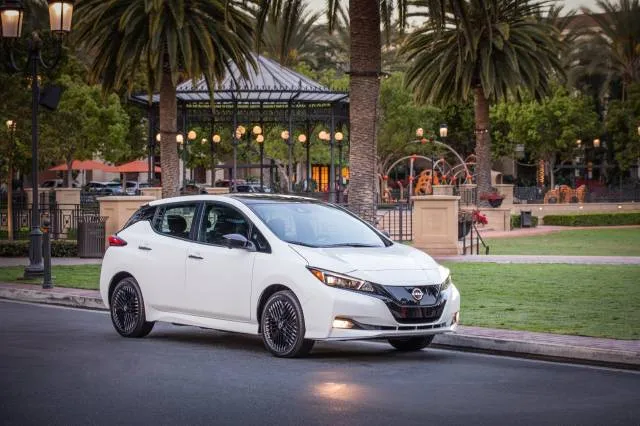
Pro: The original affordable EV. Sometimes.
Tesla promised an affordable EV for a decade now, and delivered a few, through hoops. Chevy pledged a $30,000 Equinox EV, and other automakers have teased EV affordability. But Nissan’s been doing it in reality. With a small 40-kwh battery pack and a 149-mile range, the 2024 Leaf can be had for less than $30,000.
Con: Nissan Leaf has a Chevy Bolt EV problem
But so can the Chevy Bolt EV. GM’s recall-beleaguered hatchback remains not only the most affordable electric vehicle, but also one of the best buys of any new cars: It costs $27,495, including destination. And it has a 259-mile range, right up there with most new electric crossovers. The Leaf SV Plus I tested cost nearly $37,000, and had only a 212-mile range. And the Bolt still qualifies for the revamped $7,500 federal EV tax credit, which means it can be had for about $20,000, if you can find one. There’s no argument for the Leaf in this case.
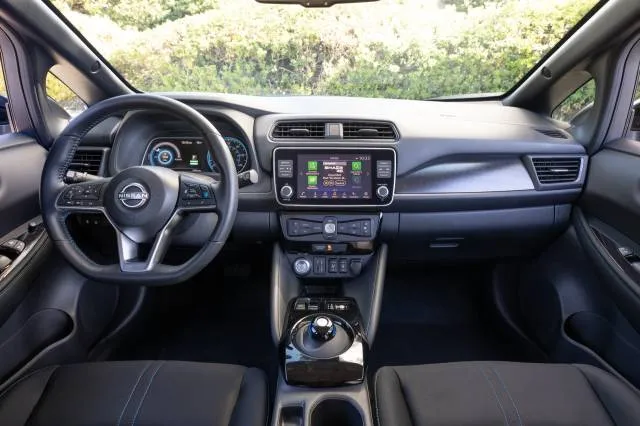
2024 Nissan Leaf
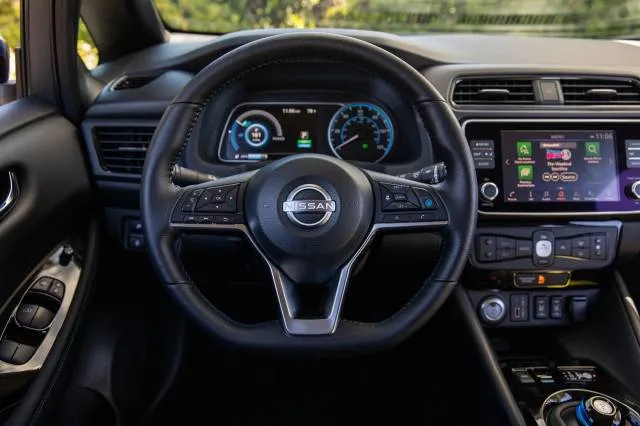
2024 Nissan Leaf
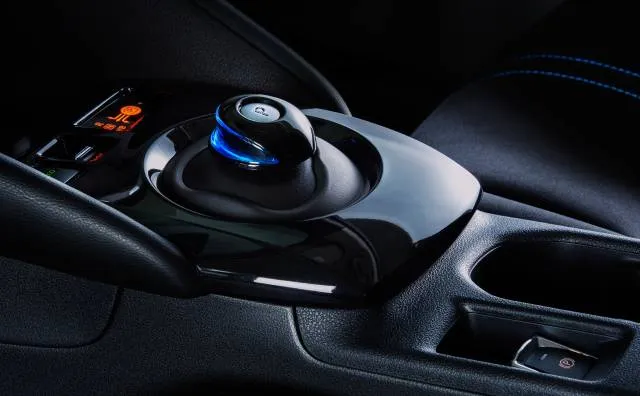
2024 Nissan Leaf
Pro: Nissan Leaf carries on, Bolt doesn’t
The only argument in favor of the Nissan Leaf over the Chevy Bolt EV is that GM will be discontinuing the Bolt EV and larger Bolt EUV at the end of 2023. That may be the only reason Nissan will continue to sell the Leaf for the 2024 model year, to reclaim most affordable EV status.
Con: Weak range
The base model has only a 149-mile range, which is the lowest range on the market. Even the Leaf SV Plus with its 212-mile range comes up short of similarly priced rivals. The VW ID.4 Standard has a 62-kwh battery pack, a range of 209 miles, and a price of about $40,000, but it qualifies for the $7,500 EV tax credit, as long as you owe that much on your taxes. The Kona EV costs about $35,000, has a 258-mile range, but doesn’t qualify for the tax credit and sales are limited to about half of U.S. states.
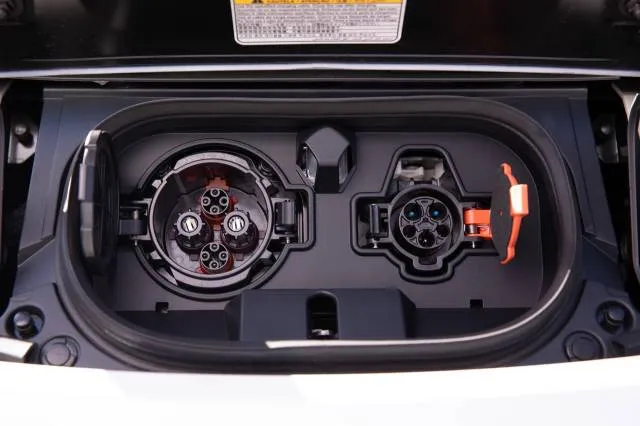
2024 Nissan Leaf
Pro: Nissan Leaf efficiency
The EPA rates the SV Plus at 3.2 miles per kwh. On a warm summer day tooting around the suburbs with the air conditioning off but one-pedal drive on, I averaged 3.5 miles per kwh in a 40-mile span, according to the trip commuter. It makes a great municipal fleet vehicle, but it’s the only EV still using CHAdeMO fast-charging instead of CCS or NACS.
Con: Dull driving characteristics
The front-drive-only Leaf lacks the punch that makes other EVs fun to drive. As speeds intensify, the Leaf quakes as if in a storm. At highway speeds of 75 mph, it feels unsettled, as if it’s being abused, louder, rougher, shakier. The front struts and Torsion beam rear axle are standard fare for modern budget cars, and it feels planted and low to the ground due to its battery pack, but it’s nothing more than ordinary around town. It serves its purpose as a no-frills commuter faithfully. I’d still take a Bolt EV though.
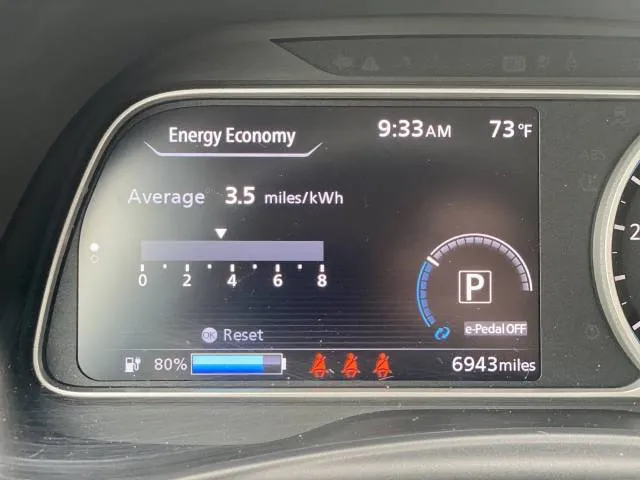
2023 Nissan Leaf
Pro: One-pedal driving
There’s a charming simplicity to the Leaf, no layered touchscreen, no strange icons with wacky drive mode settings, and the interface is all very plain and simple. The only eco-indicator is a mushroom-shaped gear knob in the console, which is the nearest thing I’ve encountered to an automotive outie belly button. Shifting it to B mode results in the most significant regen braking setting, and activating the E-Pedal setting enables one-pedal driving down to a stop. It’s an easy regen setting lacking on many luxury electric cars.
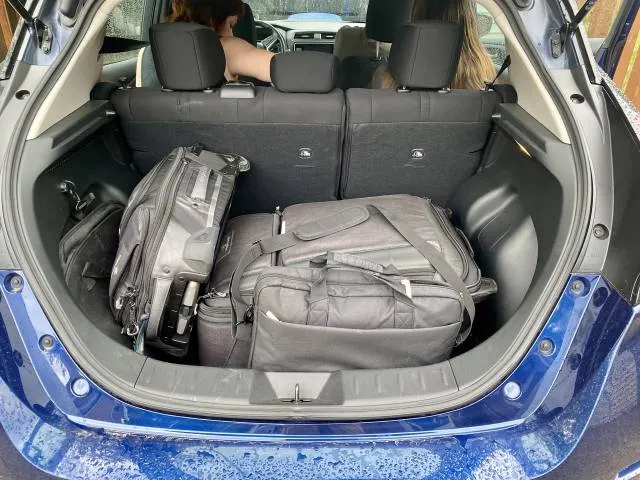
2023 Nissan Leaf

2024 Nissan Leaf
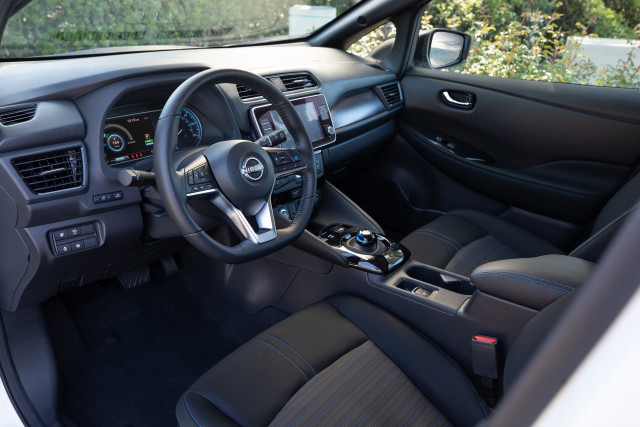
2023 Nissan Leaf
The five-seat hatchback lacks the charisma, style, range, and punch of a slew of newer electric vehicles, and nearly 13 years after its arrival and one halfway-redesign later, that’s no surprise. Yet it earns a TCC Rating of 7.3 out of 10 for being a practical, affordable commuter that’s still a deal in the base Leaf. It’s a great daily commuter and errand gopher. But the SV Plus I tested can’t compete with the new kids on the block.
_______________________________________
2023 Nissan Leaf SV Plus
Base price: $36,825, including $1,025 destination
Price as tested: $36,985
Drivetrain: 214-hp motor with a 60-kwh battery pack and front-wheel drive
EPA fuel economy: 212-mile range, 109 MPGe, 3.2 miles/kwh
Pros: Relative base value, simplicity, efficiency, one-pedal driving
Cons: SV Plus price, relative range, boring

